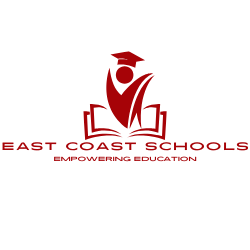What Is the “Hidden Curriculum”?
For first-generation college students—those whose parents never earned a four-year degree navigating college isn’t just about academics. There’s also a “hidden curriculum”: the unspoken expectations, cultural norms, and insider knowledge that many continuing-generation students learn at home or through legacy networks.
From understanding how to build relationships with professors to knowing which internships to apply for, the hidden curriculum can be the difference between surviving and thriving in college.
Why It Hits First-Gen Students Hardest
East Coast colleges, many of which are elite and historically selective, can pose unique challenges for first-gen students:
- Academic Expectations: Knowing how to approach office hours, request research opportunities, or manage workload across rigorous courses.
- Professional Navigation: Understanding how to build a resume, access internships, or use alumni networks.
- Social Integration: Figuring out unspoken social codes or extracurricular involvement norms.
While none of this is in the admissions brochure, it shapes the student experience and ultimately, graduation and post-college success.
How East Coast Colleges Are Closing the Gap
Thankfully, many East Coast institutions are recognizing this gap and launching innovative support systems tailored for first-gen success:
1. First-Gen Orientation Programs
Schools like Amherst College and Tufts University offer dedicated pre-orientation programs just for first-gen students. These programs include skill-building workshops, campus navigation, and early community formation with peers and mentors.
2. Faculty Mentorship Networks
Colleges like Brown University and Williams College have created first-gen/low-income (FGLI) mentoring groups where faculty who were once first-gen themselves help students decode academic and professional norms.
3. Career and Internship Bootcamps
At places like Smith College and Wesleyan, career centers offer specialized programming that teaches resume writing, interview etiquette, and internship applications with first-gen students in mind.
4. Dedicated Resource Centers
Schools like Barnard College and Swarthmore have launched FGLI offices that provide financial literacy workshops, peer mentoring, textbook subsidies, and even emergency funds for unexpected life expenses.
5. Curricular Integration
More colleges are embedding discussions of equity, privilege, and access directly into first-year seminars and advising. At Bowdoin College, for example, first-year seminars explicitly teach how to “college” from using office hours to finding research opportunities.
Why This Matters Now
With first-gen students making up a growing percentage of admitted classes at East Coast colleges, supporting their success is no longer optional. It’s essential for institutional equity, student retention, and long-term alumni engagement.
Investing in first-gen support programs also helps colleges fulfill their diversity and inclusion commitments especially in a post-affirmative action admissions landscape.
Final Thoughts: From Surviving to Thriving
East Coast colleges are no longer just focused on getting first-gen students in the door they’re now focused on getting them through. Tackling the hidden curriculum means giving students the tools, language, and confidence to advocate for themselves and take full advantage of the college experience.
If you’re a first-gen student applying to college, ask about support programs for FGLI students. And if you’re already on campus know this: you don’t have to navigate the hidden curriculum alone.
